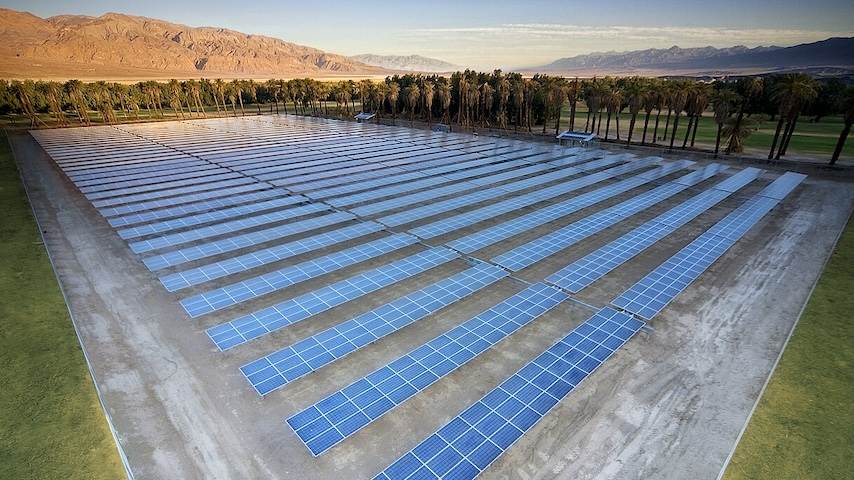California’s Increasingly Clean Power Grid is Showing the Way
Photo by spg solar/Wikimedia Commons
There are countries out there getting large proportions of their electricity — even all of it, in a few cases — from renewable energy sources. Albania, the Democratic Republic of the Congo, Paraguay, various others — the big caveat here, of course, is that the vast bulk of that energy is hydropower. Large hydroelectric dams, a viable (though often environmentally catastrophic) technology for more than a century now, are still the renewable workhorse in many places, including developed world countries with largely clean grids like Norway.
That state of affairs is at least partially behind the continued insistence from certain corners that renewables need fossil fuel backing — while a dam can generate power 24-7 (that is, if climate change-induced droughts don’t deplete reservoirs down toward their breaking point, of course), the sun doesn’t always shine and the wind doesn’t always blow. Sure. But we have batteries now.
A study published in late December led by Stanford researcher Mark Z. Jacobson examined what happened in the world’s fifth-largest economy when renewable energy that included but was not dominated by hydropower accounted for the entire electricity supply for multiple hours of many days across months. The answer: not much.
During the 116 days between March 7 and June 30 of 2024, the California power grid saw 98 days where the combination of wind-water-solar provided at least 100 percent — sometimes exceeding that, up to 162 percent — of demand for at least five minutes. Usually it lasted much longer, with a maximum of 10.1 hours and an average on those 98 days of 4.84 hours per day. Overall, renewables provided an average of 61.3 percent of electricity demand per day.
Critically, there were no blackouts during these periods, and no electricity cost increases. The grid just worked as normal, at least as far as your average customer was concerned. Hydropower remains an important piece here, but not like, say, Norway, where it’s responsible for almost 90 percent of the grid. Hydro’s 2024 generation was about on par with wind power, and well below that of solar power.
Batteries had a lot to do with the shift. Late in the study period, on June 19, nighttime battery peak electricity output set a new record of 7.78 gigawatts — around the output of eight nuclear reactors. The addition of battery storage to the grid has been nothing short of remarkable over the past couple of years; the researchers found that battery output across the 116 study days was 105 percent more than the same period only one year earlier. Meanwhile, wind power output was eight percent higher, and solar output was 31 percent higher than the year before. Solar power managed to meet more than 100 percent of overall demand for the first time on a sunny day in April; it managed the trick 22 more times through June.
This dramatic shift has an obvious benefit: “…an estimated 40% decrease in fossil gas electricity production on the CAISO grid between the two periods,” the authors wrote. The spot price of electricity was also substantially lower in the study period than in the previous year; California still has among the highest prices in the country overall, but the researchers argue this is due to unrelated factors and other states with high renewables penetration actually have some of the lowest prices. That confirms various projections, like that from the International Energy Agency that claims “rapid clean energy transitions result in lower consumer bills.”
There is still a way to go here, of course. But the economics of renewables — including, critically, batteries — are making this sort of shift feel like an inevitability. The industries opposed to it won’t go quietly; but there’s a roadmap here, ready to be followed.